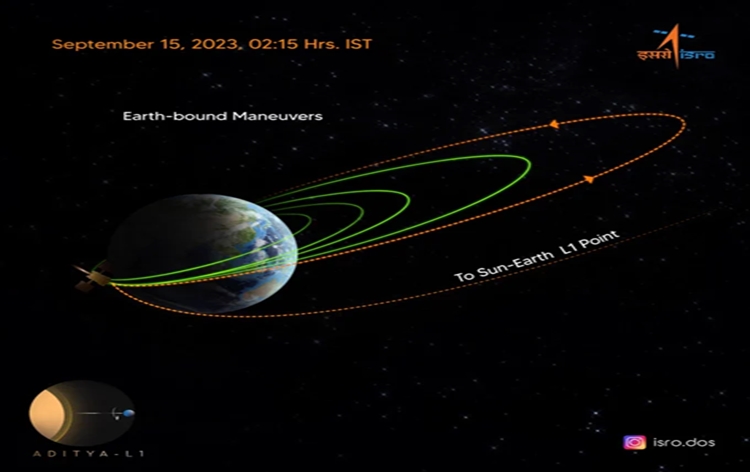On September 19, India’s Sun-study mission, Aditya L1, will bid farewell to Earth as it slingshots towards the L1 point in space, located 1.5 million kilometers away. The Indian Space Research Organisation (ISRO) will perform the Trans-Lagrangian Point 1 Insertion (TL1I) on Tuesday at 2 a.m. The space agency completed its fourth and last orbit around the Earth early Friday morning.
The spacecraft is now in a 256 km x 1,21,973 km elliptical orbit.
“ISRO’s ground stations at Mauritius, Bengaluru, SDSC-SHAR and Port Blair tracked the satellite during this operation, while a transportable terminal currently stationed in the Fiji islands for Aditya-L1 will support post-burn operations,” the space agency said on X, formerly Twitter. They carried out the first orbit-raising maneuver just the day after the successful launch.
The Chandrayaan-3 spacecraft, which had just soft-landed on the Moon, was still collecting data at the moment. They have temporarily put the lander and rover to sleep, and they are now awaiting the next lunar sunrise on September 22.
After traveling over four months to the L1 point, a distance never before traveled by an Indian spacecraft, the Solar Observatory will park itself in a halo orbit around the L1 point and study the Sun with seven complicated equipment.
Nigar Shaji, the project director of Aditya L1, stated that ISRO typically places satellites in orbit around the Earth or other celestial bodies like the Moon and Mars.
She explained that in the case of Aditya L1, the spacecraft will move around a point in space rather than around any celestial object. “The gravitational pull at the L1 point is completely balanced; it acts like a virtual planet around which the spacecraft will be inserted.” “This halo orbit insertion at L1 is something ISRO has never done before,” Shaji explained.
This characteristic of the L1 point, as well as five other Lagrange points between any two astronomical objects, makes space an ideal parking area. This is due to the fact that spacecraft do not require a large amount of fuel to remain in such orbit.
In fact, an ISRO scientist stated that because of the chosen L1 point to study the Sun, the five-year mission could last as long as 25 years, similar to the Solar and Heliospheric Observatory mission (SOHO), which had a two-year planned life but has been collecting data for nearly 28 years since its launch in 1995. SOHO is a joint mission of the National Aeronautics and Space Administration (NASA) and the European Space Agency (ESA).
Source:IE







 Finance
Finance







